CSR Regulation & Child Labour in Big Companies: Current Status
VerifiedAdded on 2023/06/15
|11
|578
|379
Presentation
AI Summary
This presentation examines the current state of Corporate Social Responsibility (CSR) regulation concerning child labour in large companies, particularly focusing on the issues arising from outsourcing manufacturing to factories in developing countries. It highlights the definition, causes, and impacts of child labour, emphasizing its detrimental effects on children's education and the economy. The presentation includes perspectives from various authors on child labour, contrasting it with child care, and discusses relevant laws and the 'CRAP' test in the context of child labour. It concludes by advocating for companies to adopt principles and rules that promote child care, including on-site facilities, to support employees and ensure children's well-being. The presentation references several academic sources to support its analysis and recommendations.
1 out of 11
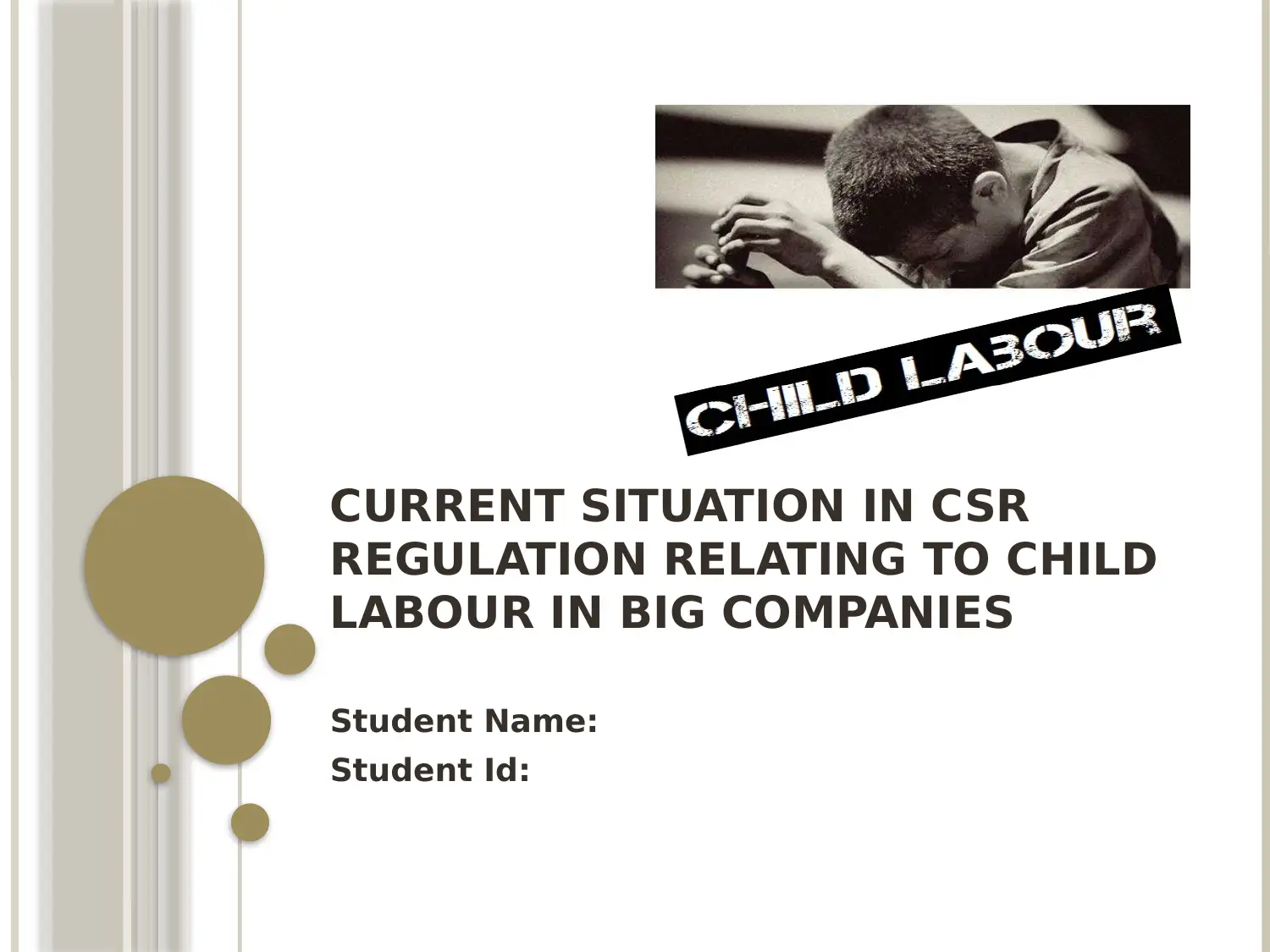
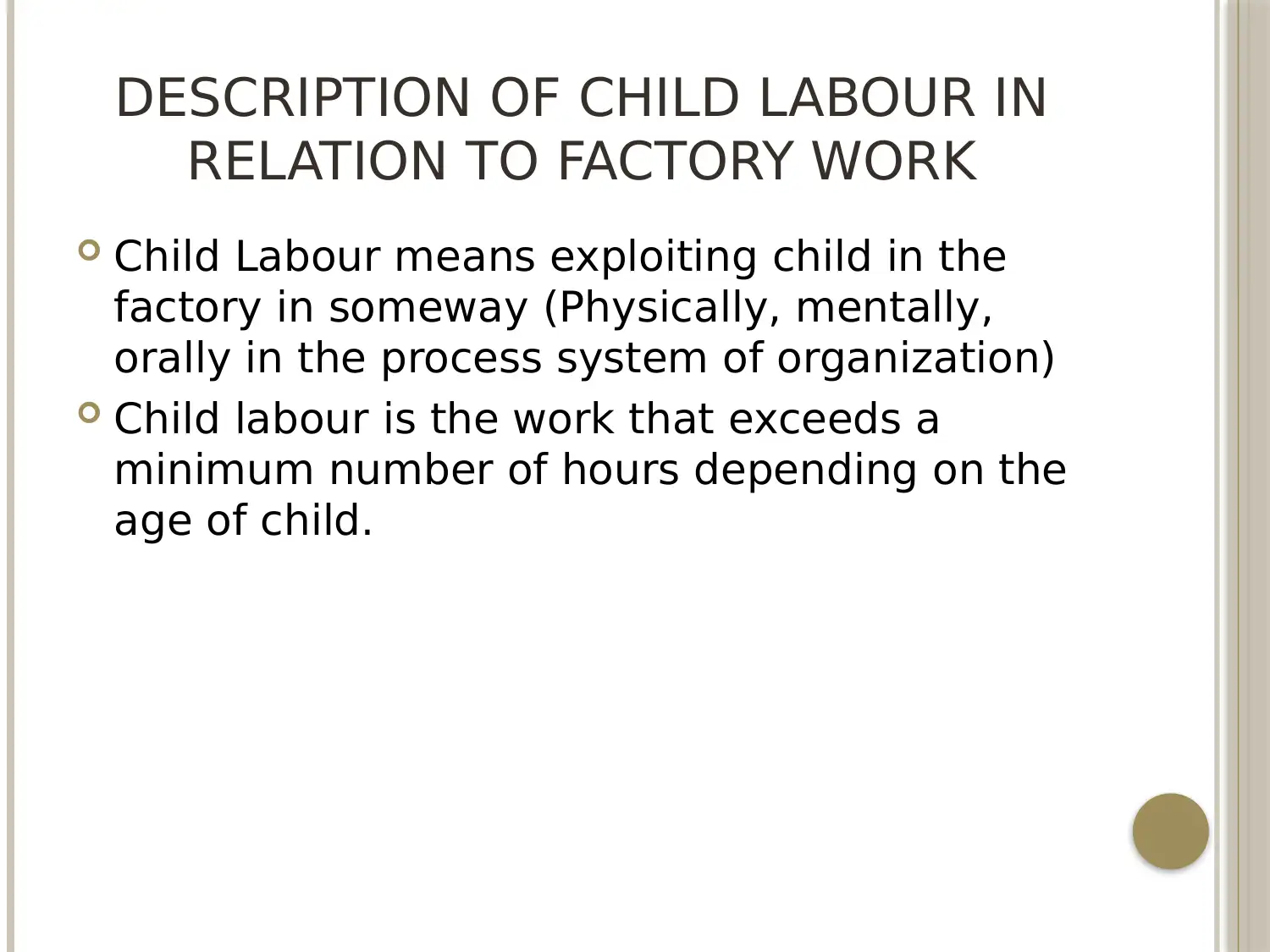
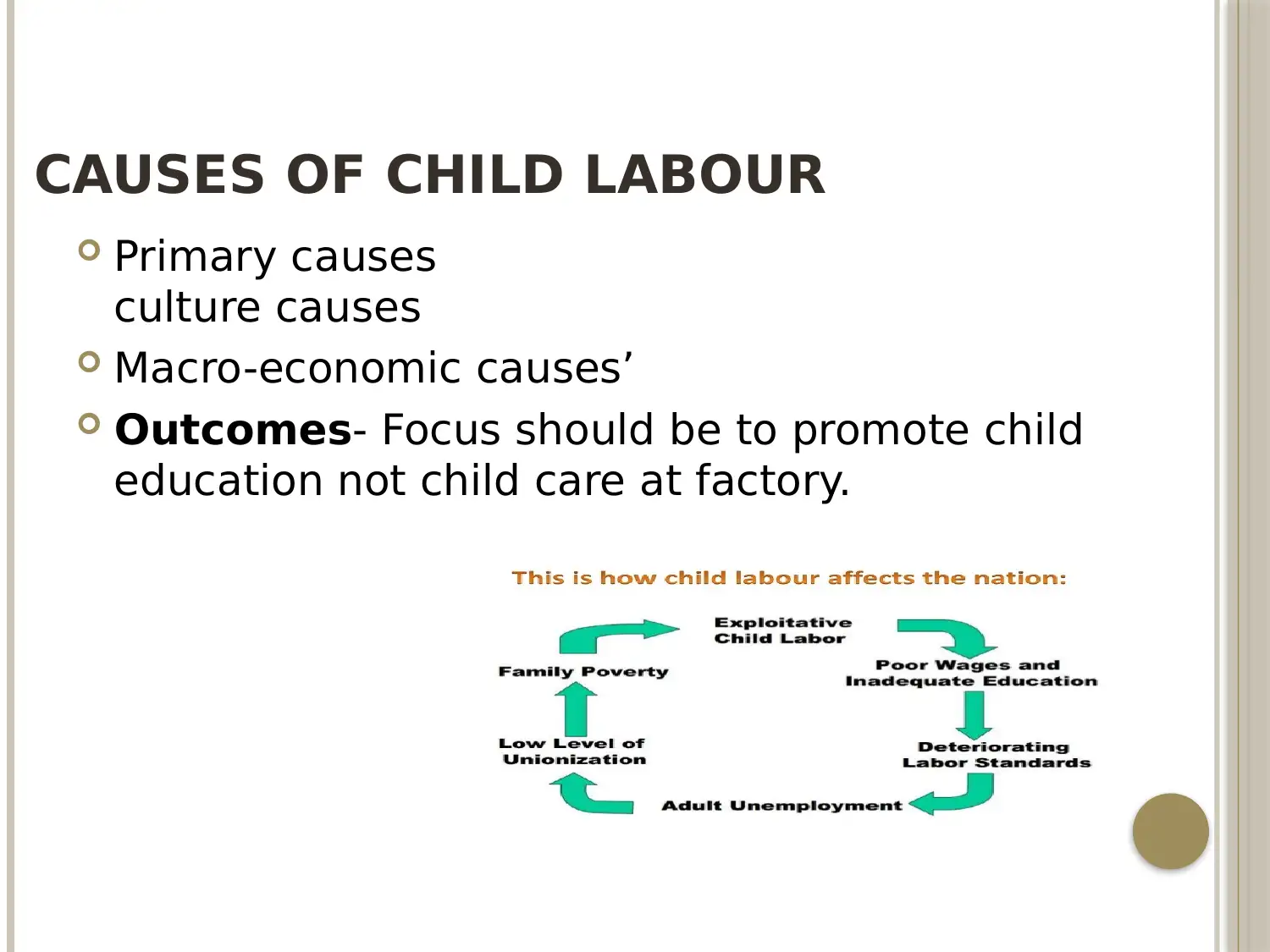

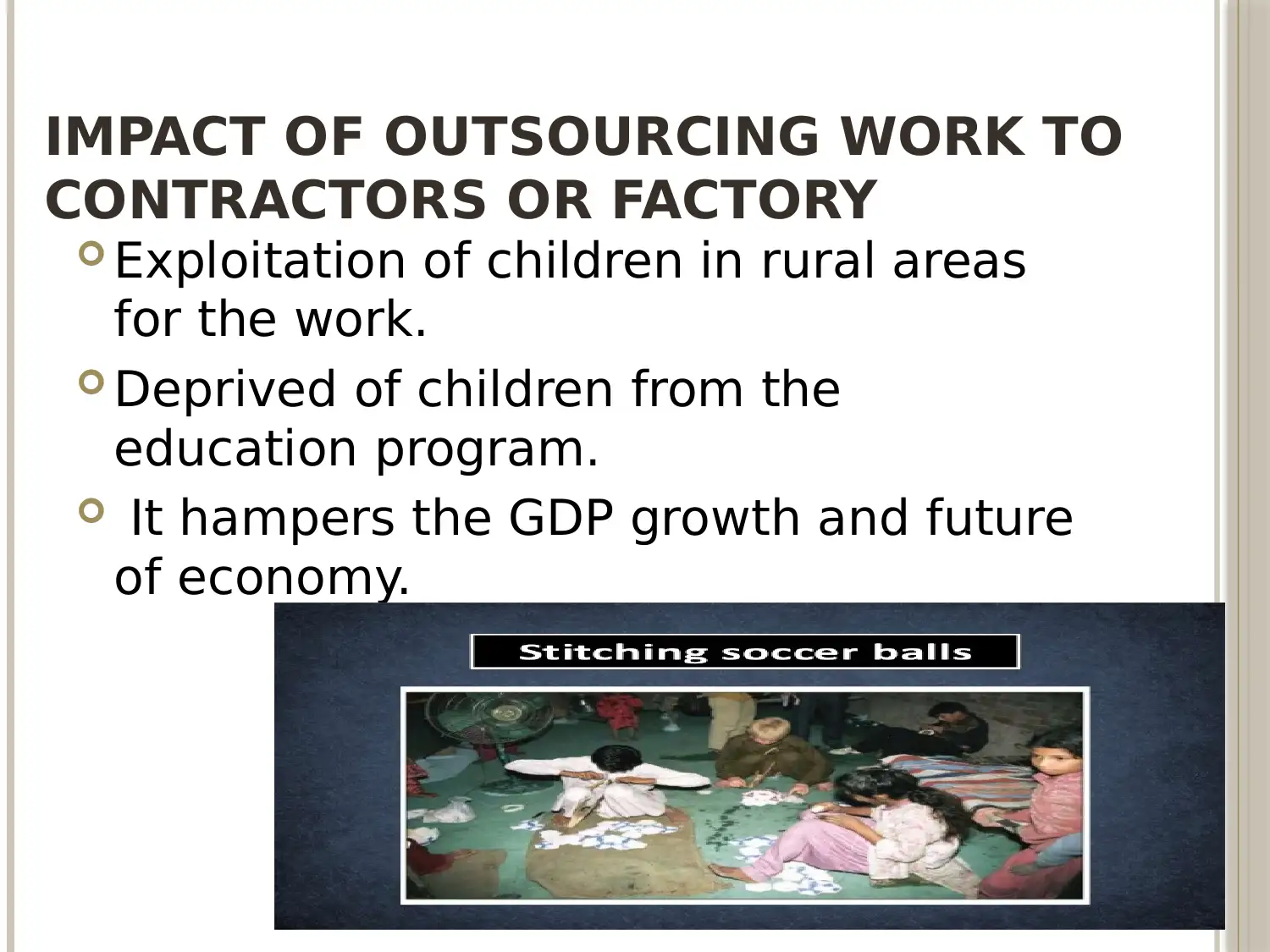
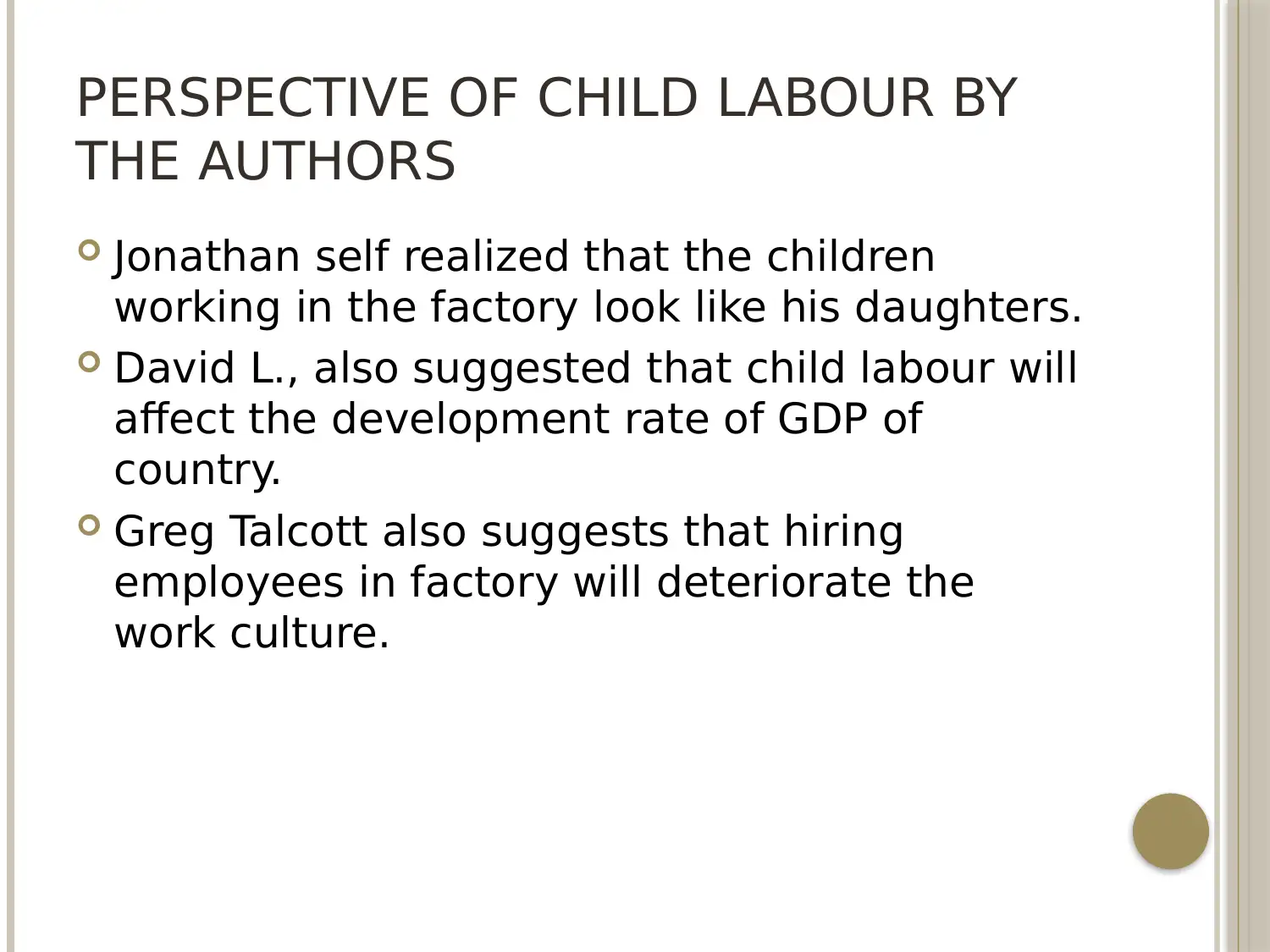
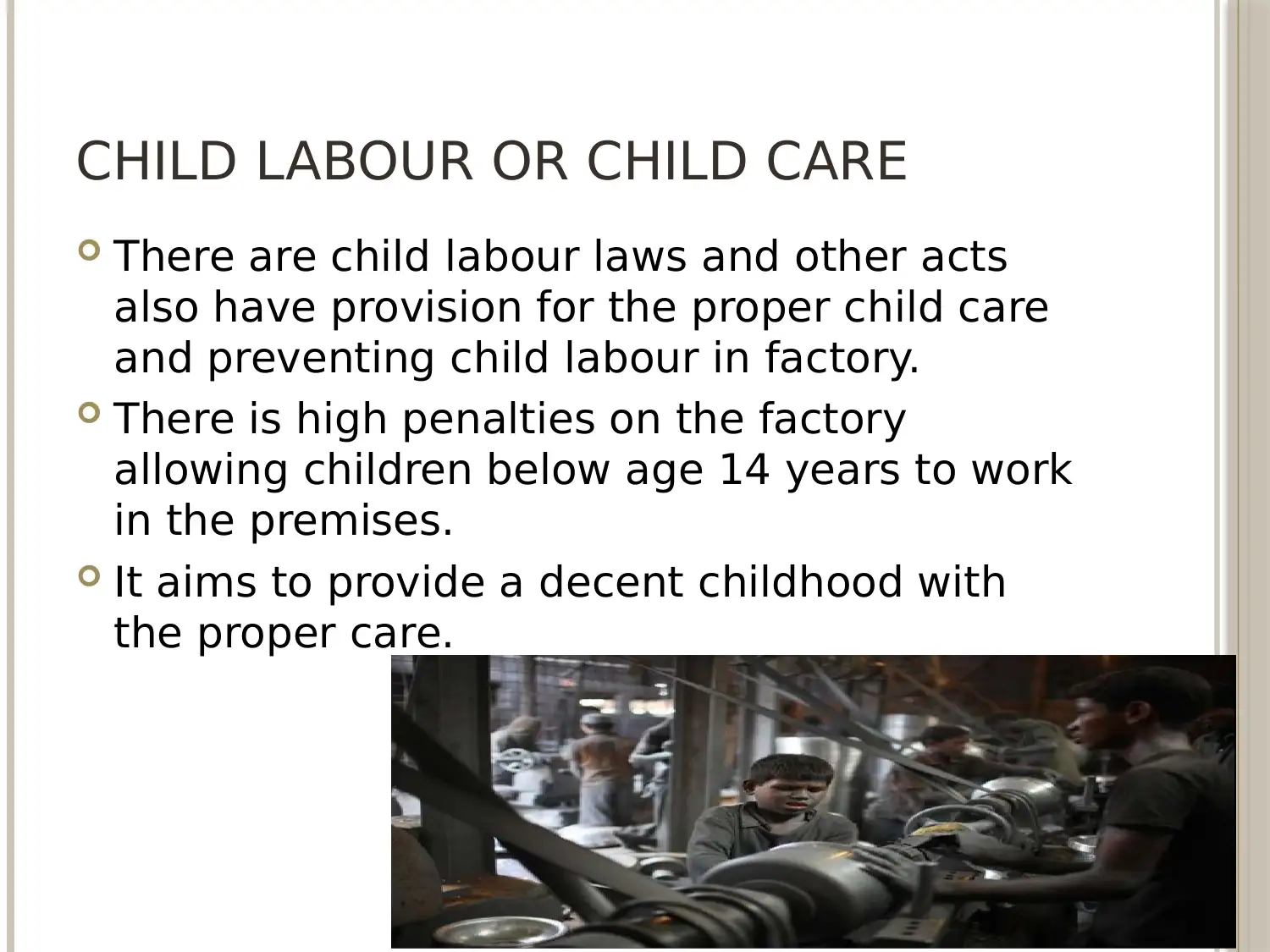
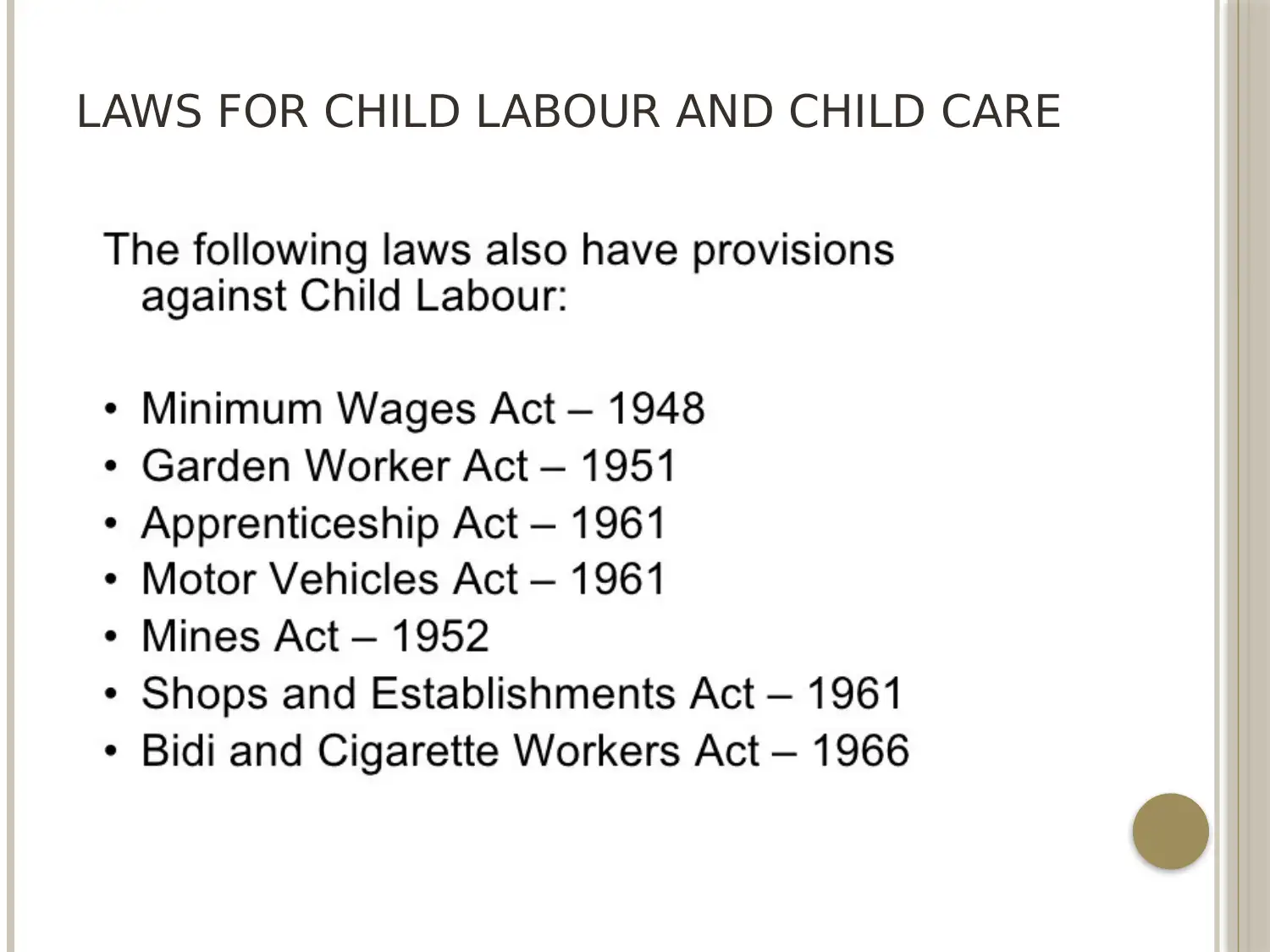
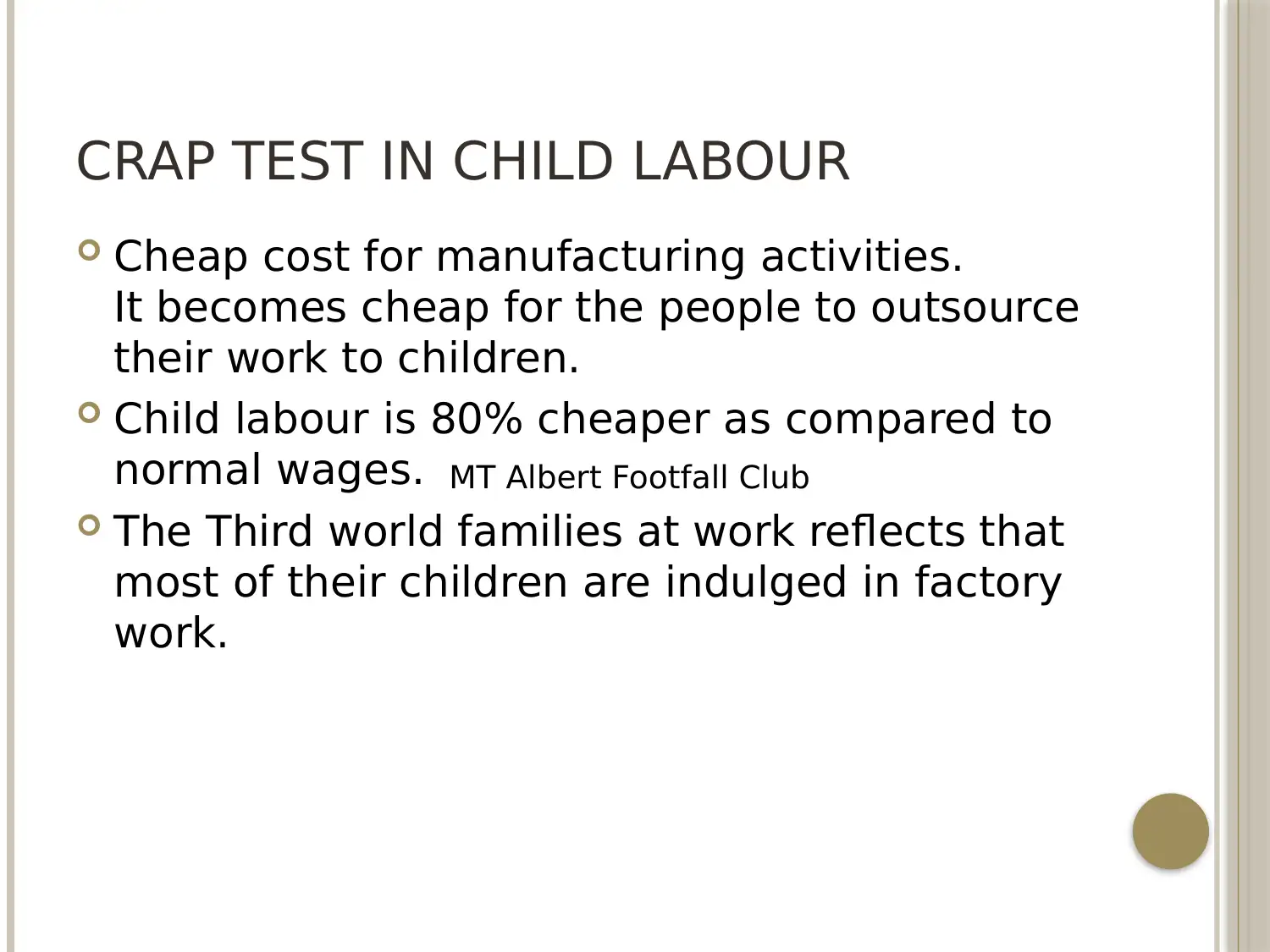
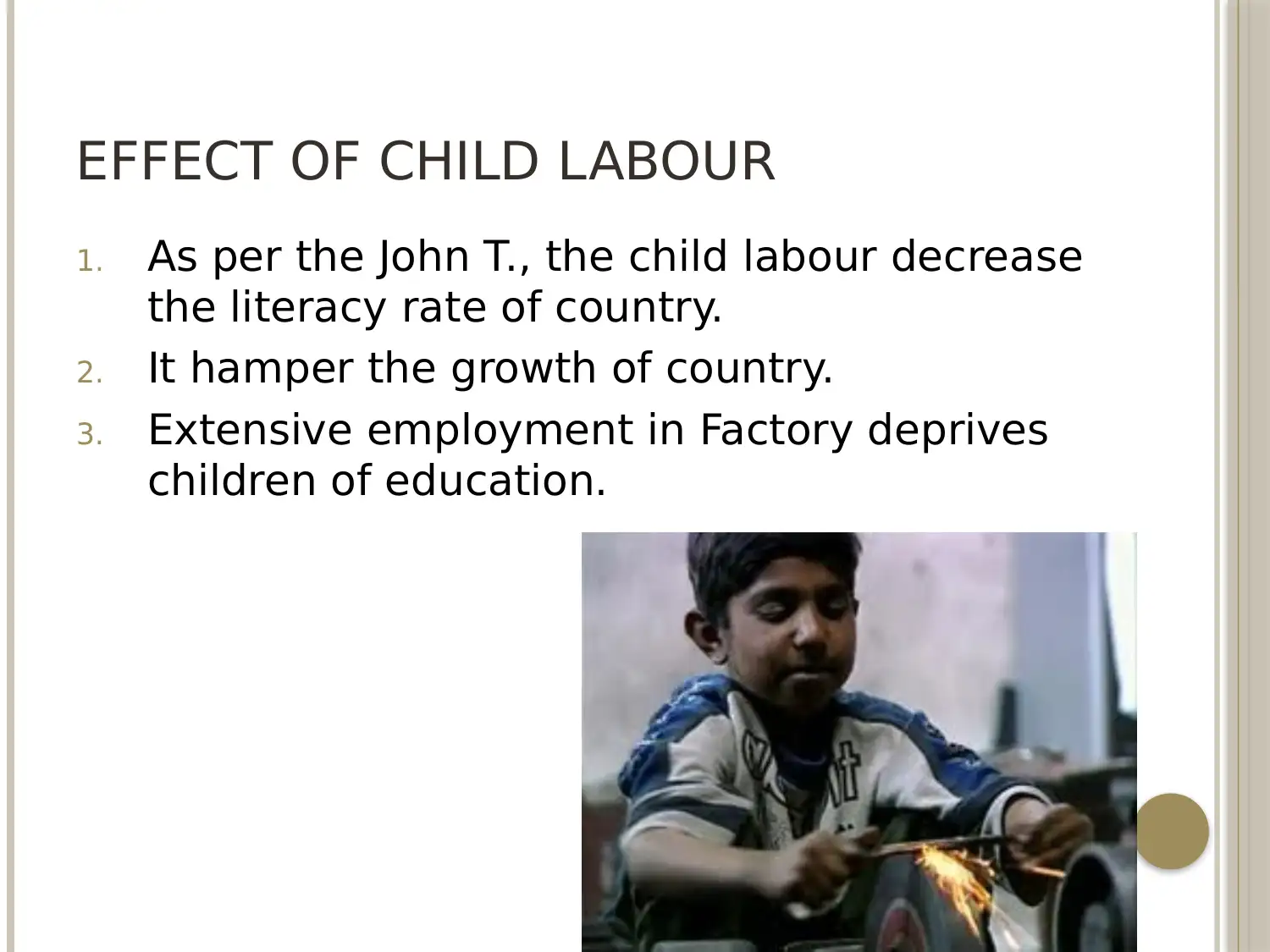
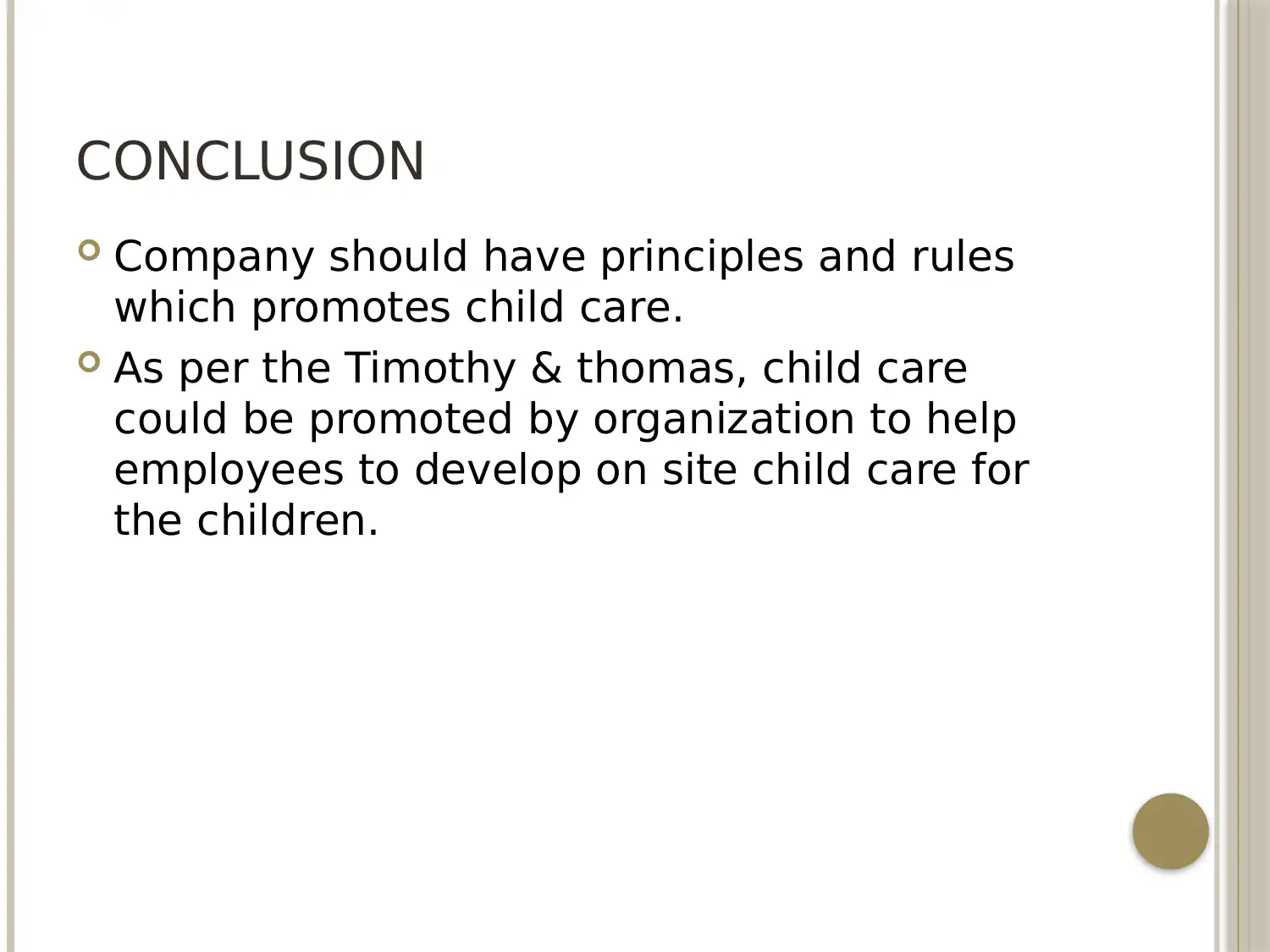
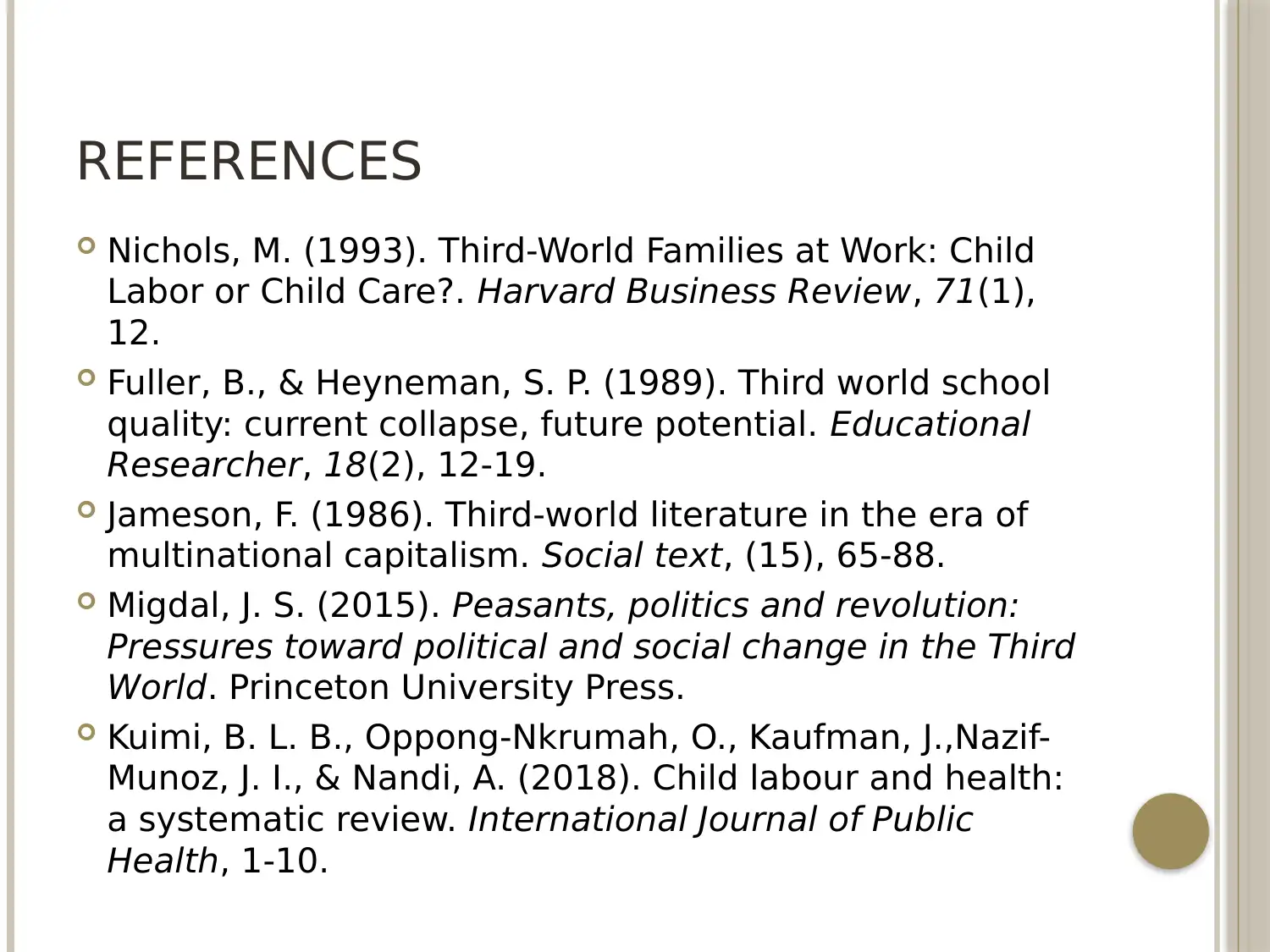






![[object Object]](/_next/static/media/star-bottom.7253800d.svg)